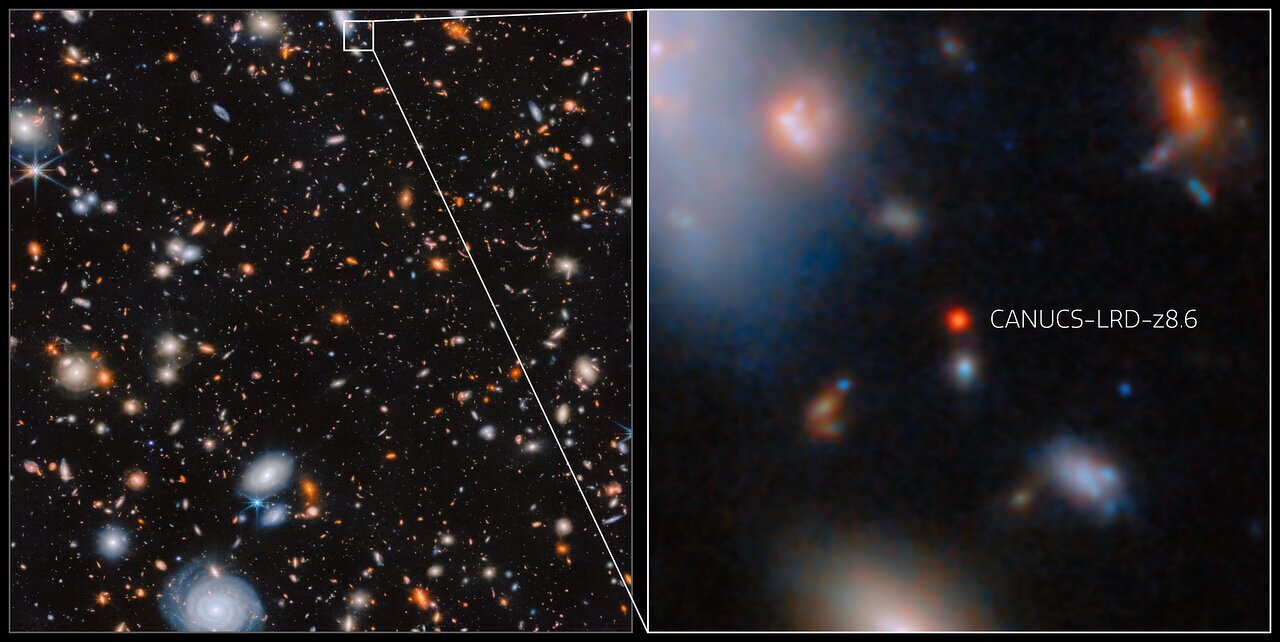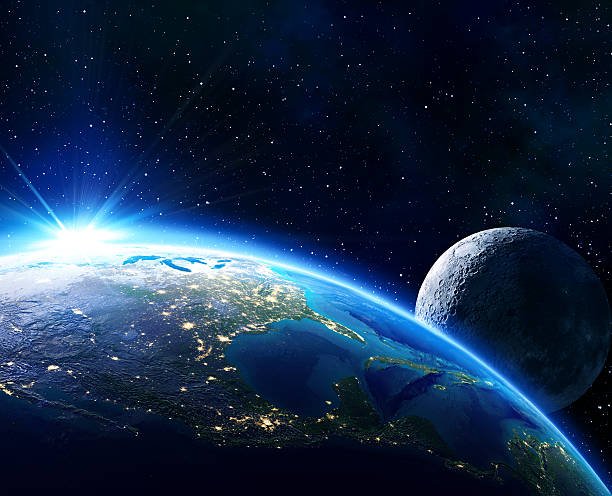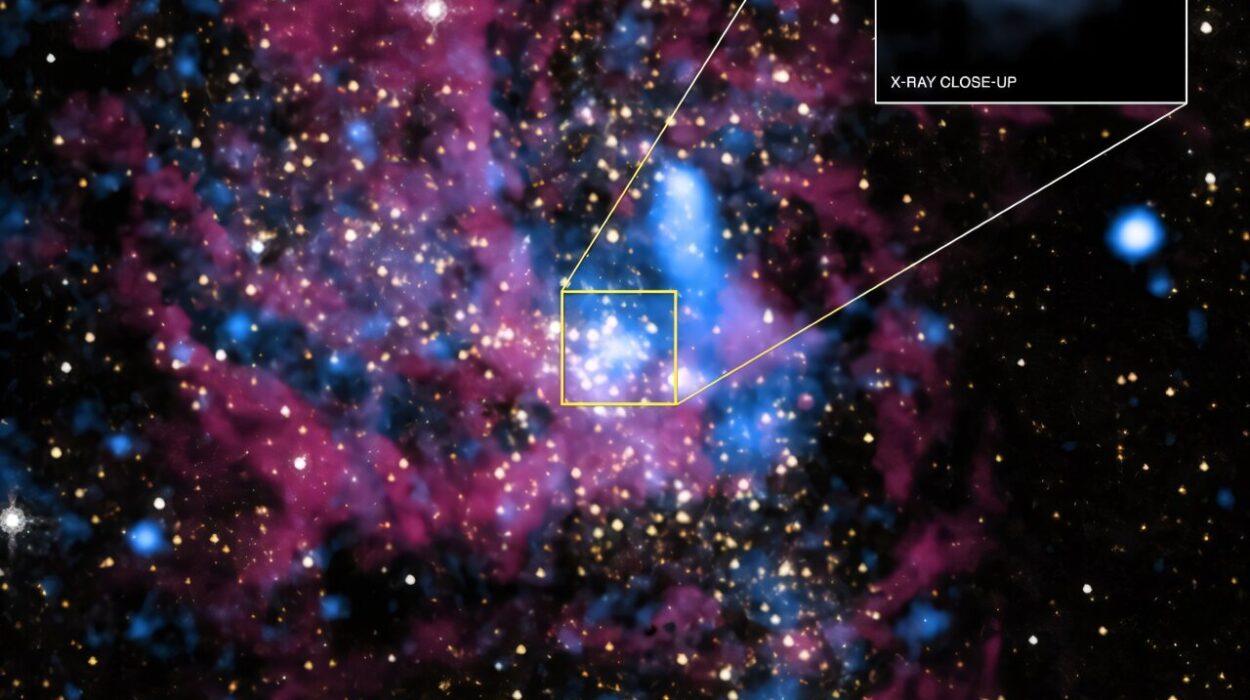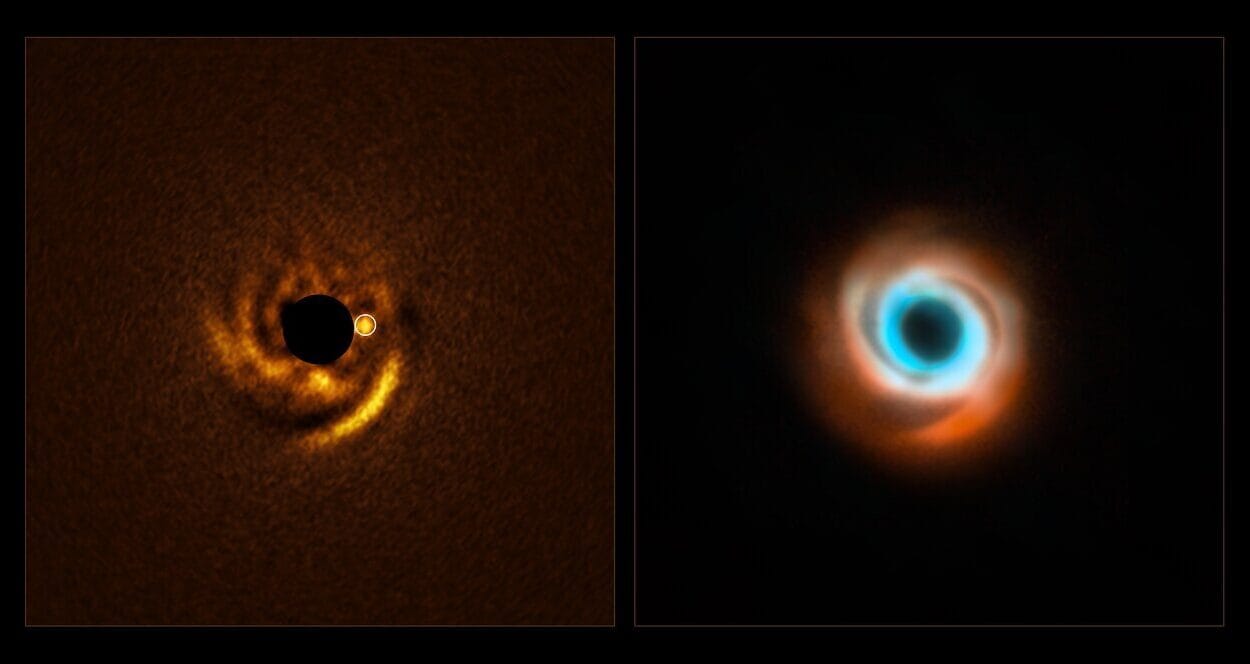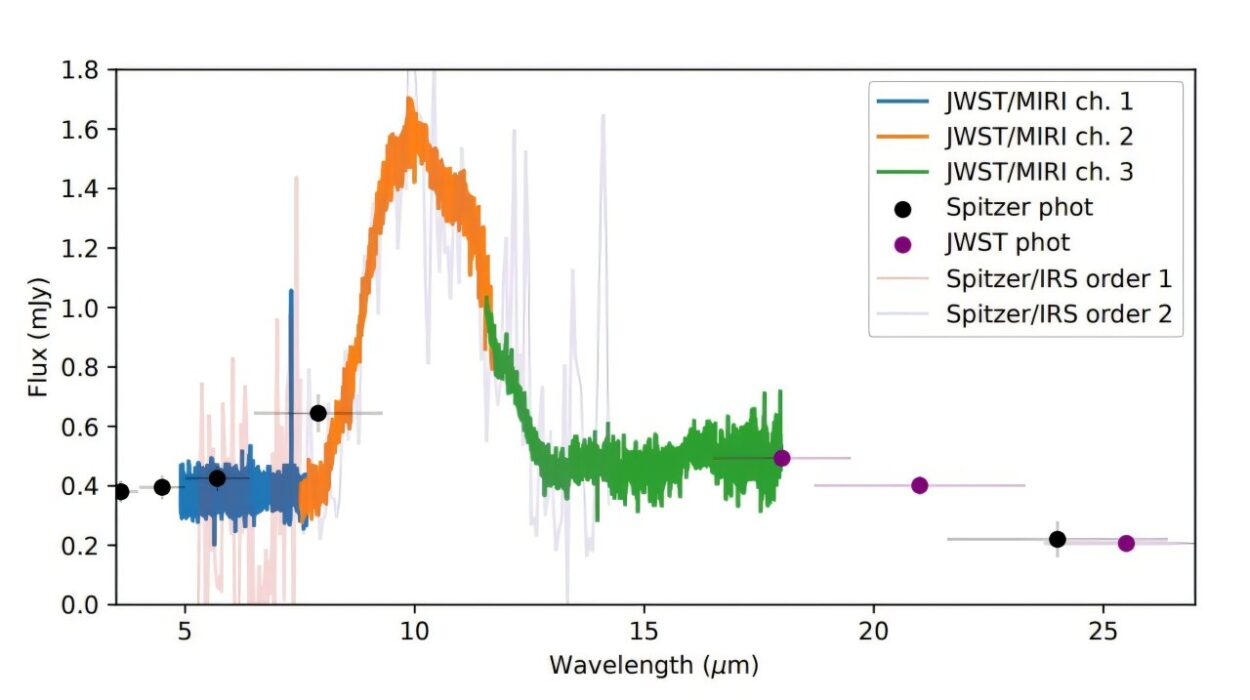The early universe was a strange and mysterious place—vast, dark, and filled with potential for the extraordinary. Just 570 million years after the Big Bang, galaxies were beginning to take shape, and within them, some of the first supermassive black holes were beginning their voracious growth. But for astronomers, this early period has remained shrouded in mystery, with many questions left unanswered.
Until now.
In a groundbreaking discovery, researchers using the powerful James Webb Space Telescope (JWST) have observed a galaxy unlike anything seen before. Named CANUCS-LRD-z8.6, this distant galaxy is home to an actively growing supermassive black hole, and its unexpected characteristics are rewriting our understanding of the early universe.
For years, astronomers have been hunting for clues to how galaxies and their supermassive black holes formed in the first billion years of cosmic history. In the process, they’ve uncovered what are known as “Little Red Dots” (LRDs), faint and distant objects that were puzzling to scientists. These LRDs were often small galaxies, seen at a time so early in the universe’s life that they shouldn’t have developed supermassive black holes yet. At least, not according to conventional theories. CANUCS-LRD-z8.6 is one such galaxy, and what it reveals is nothing short of extraordinary.
A Surprising Find in the Early Universe
The discovery of CANUCS-LRD-z8.6 was made possible by the remarkable capabilities of Webb’s Near-Infrared Spectrograph (NIRSpec), which allowed researchers to peer into the faint glow of this distant galaxy. What they found was astonishing: within the heart of this galaxy, there existed a black hole that was not only present but actively growing at a rapid rate—far faster than scientists had expected for such an early time in the universe.
Lead author Roberta Tripodi, a researcher from the University of Ljubljana and INAF—Osservatorio Astronomico di Roma, expressed just how significant this find is: “This discovery is truly remarkable. We’ve observed a galaxy from less than 600 million years after the Big Bang, and not only is it hosting a supermassive black hole, but the black hole is growing rapidly—far faster than we would expect in such a galaxy at this early time.”
These words are not just a reflection of awe but also of surprise. For a black hole to grow at such a speed so early in the universe challenges our existing theories about how galaxies and black holes formed. How could a galaxy so young harbor such a massive and rapidly growing black hole?
Unraveling the Mystery of the Black Hole’s Growth
The key to understanding this galaxy’s unusual characteristics lies in its spectral data. By analyzing the light emitted from CANUCS-LRD-z8.6, the team was able to identify several crucial features—most importantly, gas that had been ionized by intense radiation, suggesting the presence of a black hole consuming material at the center of the galaxy. This process, known as accretion, occurs when a black hole pulls in surrounding gas and dust, causing the material to heat up and emit powerful radiation.
The data from Webb’s spectrograph also provided an estimate of the black hole’s mass, and what the team discovered was equally surprising. The black hole was unusually large for such an early stage in the universe, particularly when compared to the size of the galaxy itself. This raises important questions about how black holes can form and grow so rapidly in the early universe, even in relatively small galaxies.
Dr. Nicholas Martis, a collaborator from the University of Ljubljana, emphasized the significance of the Webb data: “The spectral features revealed by Webb provided clear signs of an accreting black hole at the center of the galaxy, something that could not have been observed with previous technology. What makes this even more compelling is that the galaxy’s black hole is overmassive compared to its stellar mass. This suggests that black holes in the early universe may have grown much faster than the galaxies that host them.”
A Galaxy that Defies Expectations
One of the key insights that came from this study is that the size of a galaxy’s central black hole often correlates with the size of the galaxy itself. In most galaxies, the larger the galaxy, the larger its central black hole. But in the case of CANUCS-LRD-z8.6, the relationship between the galaxy and its black hole doesn’t follow the expected pattern. This galaxy is compact and still in the early stages of evolution, yet its black hole is even more massive than expected.
This finding challenges long-held beliefs about how black holes and galaxies co-evolve. According to conventional wisdom, black holes grow as their host galaxies do, gradually increasing in mass as more material is pulled in over time. But CANUCS-LRD-z8.6 appears to break this rule, suggesting that black holes may have begun growing much earlier than previously thought.
Prof. Maruša Bradač, who leads the research group at the University of Ljubljana, summed up the significance of the discovery: “The unexpected rapid growth of the black hole in this galaxy raises questions about the processes that allowed such massive objects to emerge so early.”
The Cosmic Implications: What Does This Mean for Our Understanding of the Universe?
The implications of this discovery are far-reaching. If black holes were indeed able to form and grow at such a rapid pace in the early universe, this could change our understanding of how galaxies and black holes evolved during the first billion years. It also raises new questions about the mechanisms that allow black holes to accumulate mass at such an accelerated rate.
This research is not just a curiosity; it is a key piece of the puzzle in the ongoing effort to understand the formation of the first supermassive black holes in the universe. Prof. Bradač’s team hopes to find more galaxies like CANUCS-LRD-z8.6 to help further refine their theories. “As we continue to analyze the data, we hope to find more galaxies like CANUCS-LRD-z8.6, which could provide us with even greater insights into the origins of black holes and galaxies,” she said.
The team is already planning additional observations, including with the Atacama Large Millimeter/submillimeter Array (ALMA), to study the cold gas and dust in the galaxy and refine their understanding of the black hole’s properties. As these observations unfold, the picture of the early universe—and the first black holes—will continue to grow sharper.
Why This Discovery Matters
The discovery of CANUCS-LRD-z8.6 isn’t just about uncovering one galaxy or one black hole; it’s about challenging and refining our fundamental understanding of how the universe works. This galaxy, with its unexpectedly massive and rapidly growing black hole, offers a new window into the early stages of cosmic history. It reveals that black holes might have formed and started growing much earlier than we thought, in ways that we still don’t fully understand.
For astronomers, it’s a call to rethink the relationship between galaxies and black holes, and a reminder that the universe is full of surprises. As Webb’s observations continue to peel back the layers of cosmic history, we can expect many more revelations like this—each one reshaping our view of the universe and how it came to be. The journey to understand the first supermassive black holes is just beginning, and discoveries like this one suggest that the early universe was far more complex and dynamic than we ever imagined.
More information: Roberta Tripodi et al, Extreme properties of a compact and massive accreting black hole host in the first 500 Myr, Nature Communications (2025). DOI: 10.1038/s41467-025-65070-x
